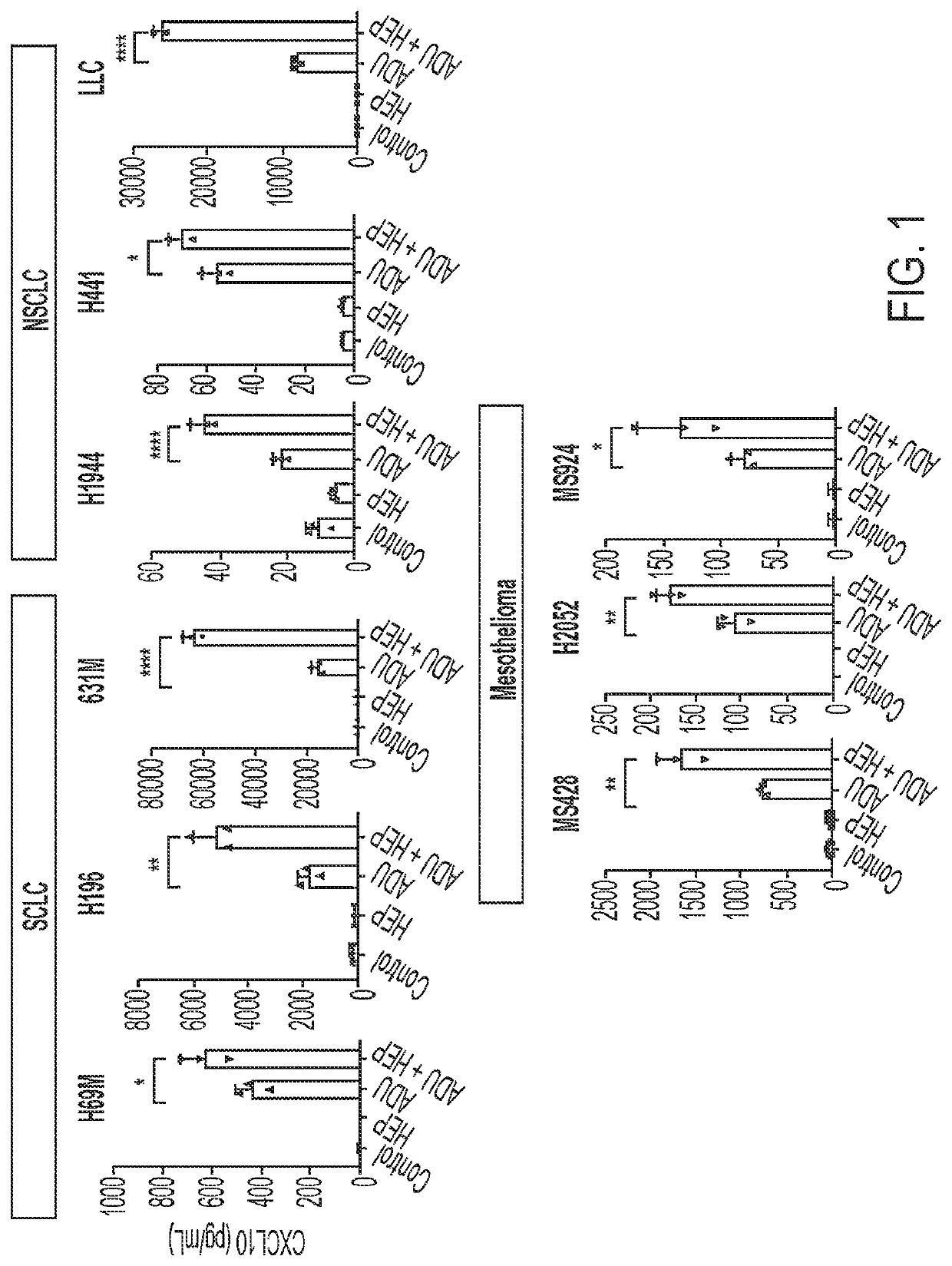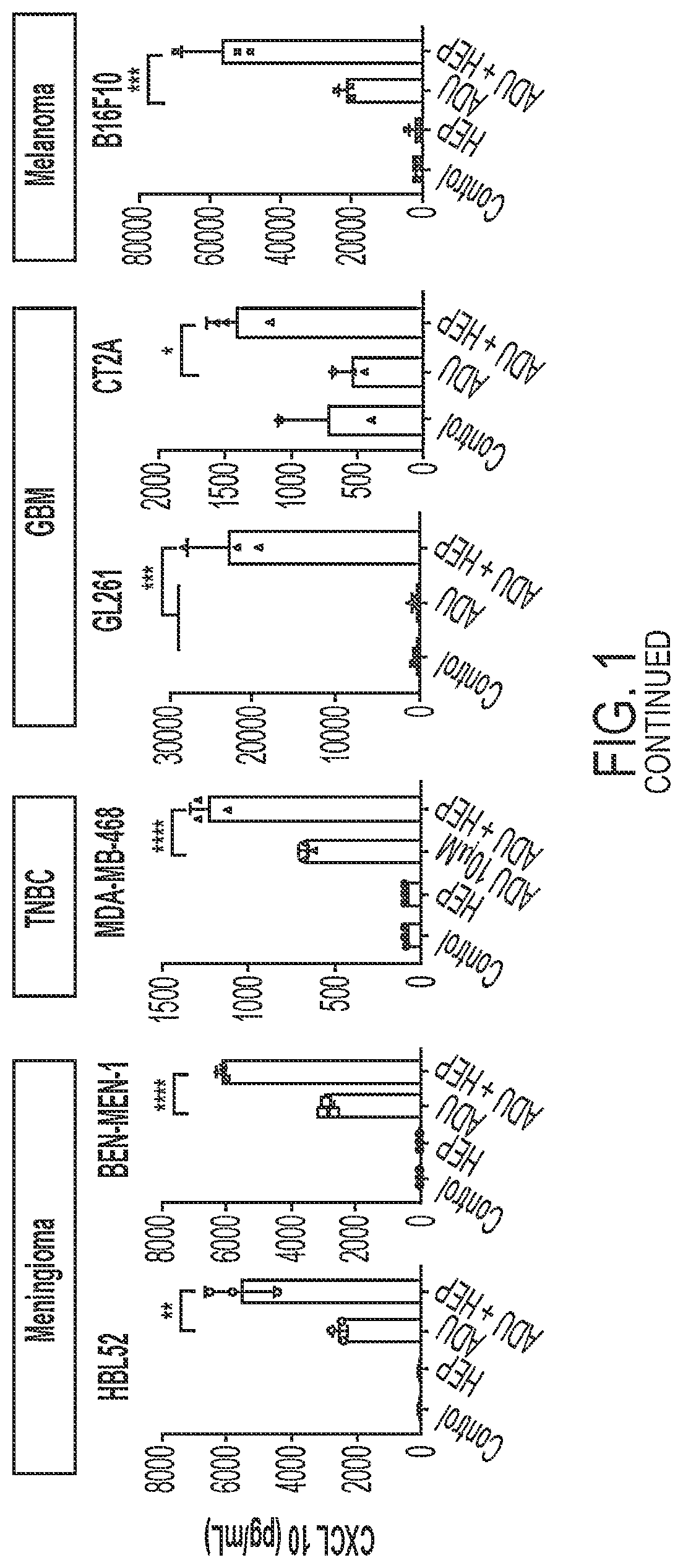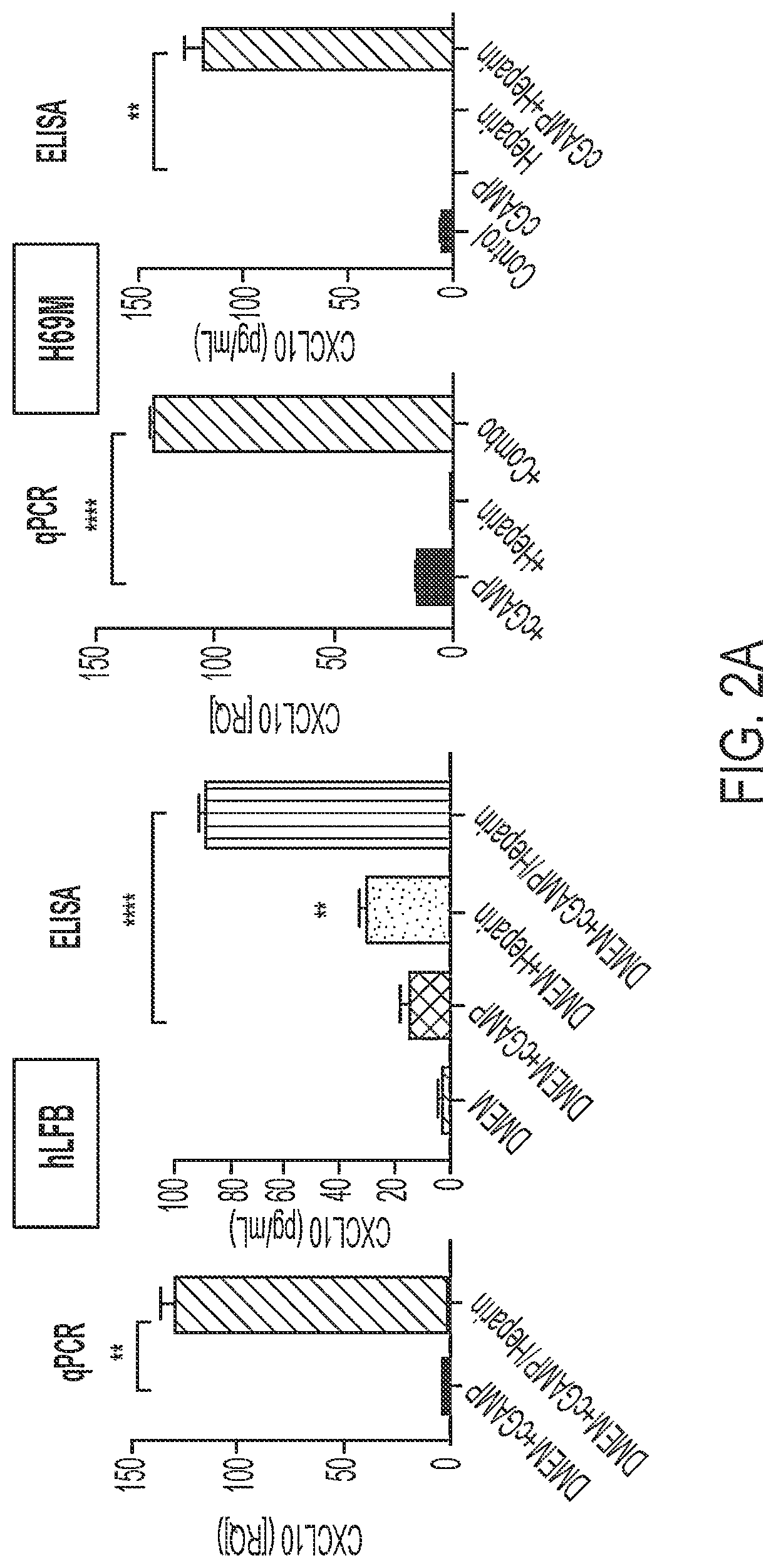Use of heparin to promote type 1 interferon signaling
a technology of interferon and heparin, which is applied in the direction of organic active ingredients, drug compositions, peptide/protein ingredients, etc., can solve the problems of reliance on differential toxicity of cancerous cells versus normal cells, and achieve the effects of halting the progression of the disease, reducing the risk of cancer, and slowing the progression of the cancer
- Summary
- Abstract
- Description
- Claims
- Application Information
AI Technical Summary
Benefits of technology
Problems solved by technology
Method used
Image
Examples
example 1
[0169]Heparin was found to enhance STING agonist activity in cancer cells. Human and mouse cancer cell lines were treated with 50 μM ADU S-100+ / −heparin at a concentration of 10 μg / mL (human cells) or 1 μg / mL (mouse cells) for 24 hours prior to conditioned media collection for CXCL10 ELISA (FIG. 1). The ELISA results for all cell lines showed that the coadministration of heparin and ADU S-100 yielded significantly higher STING activity (as indicated by the amount of CXCL10 in the media) than the administration of ADU 5-100 alone.
[0170]Also, Human lung fibroblasts (hLFB) were treated with 2,3-cGAMP 1 μg / mL (hereafter referred to as “cGAMP)+ / −heparin 1 μg / mL for 24 hours prior to CXCL10 qPCR and collection of conditioned media for CXCL10 ELISA (FIG. 2A). The qPCR results showed that the treatment of hLFB cells with cGAMP in the absence of heparin yielded negligible STING activity, as indicated by CXCL10 expression. However, the addition of heparin resulted in significantly enhanced ST...
example 2
[0173]Heparin was found to dose-dependently enhance STING agonists effects across various STING agonists. 631M / RPPM mouse SCLC cells were treated for 24 hours either with or without 1 μg / mL heparin and the following STING agonists: 1 μg / mL cGAMP, 10 μg / mL cGAMP, 50 μM ADU, or 0.2 mg / ml CMA. The CXCL10 ELISA results showed a significant interaction between heparin and all of the STING agonists (cGAMP, ADU, CMA) on the amount of CXCL10 in the media, which was not observed with the control. (FIG. 3A).
[0174]An additional 24-hour dose response study was conducted on H69M cells. The addition of 1 μg / mL of heparin to either 1 μg / mL cGAMP or 10 μg / mL cGAMP significantly increased STING activity, as indicated by amount of CXCL10 in the media. Compared to administering cGAMP alone, STING activation (as indicated by amount of CXCL10 in the media) was shown to increase significantly with heparin (FIG. 3B).
[0175]A 24-hour dose response study was also conducted on BEN-MEN-1 meningioma cells (here...
example 3
[0176]RPPM mouse SCLC cells were treated with 1 μg / mL 2,3-cGAMP and 1 μg / mL unfractionated heparin, low-molecular weight heparin (LMWH), heparin pentasaccharide fondaparinux, 6-desulfated heparin, chondroitin sulfate+ / −the JAK / STAT inhibitor ruxolitinib (ruxo 1 μg / mL) for 24 hours prior to CXCL10 ELISA. H69M human SCLC cells were treated with 10 μg / mL 2,3-cGAMP or 50 μM ADU+ / −heparin 10 μg / mL or desulfated heparins heparins 2-O desulfated (2DES), N-desulfated (NDES), and 6-O desulfated (6DES) 24 hours prior to CXCL10 ELISA. Low molecular weight heparin and some desulfated heparins were shown to significantly enhance STING activity, as indicated by CXCL10 release, in a similar fashion to unfractionated heparin, but fondaparinux did not. Chondroitin sulfate was also added as a negative control, confirming that the heparan sulfate is unique among glycosaminoglycans (FIG. 3E).
PUM
| Property | Measurement | Unit |
|---|---|---|
| Structure | aaaaa | aaaaa |
| Molecular weight | aaaaa | aaaaa |
| Chemotherapeutic properties | aaaaa | aaaaa |
Abstract
Description
Claims
Application Information
 Login to View More
Login to View More - R&D
- Intellectual Property
- Life Sciences
- Materials
- Tech Scout
- Unparalleled Data Quality
- Higher Quality Content
- 60% Fewer Hallucinations
Browse by: Latest US Patents, China's latest patents, Technical Efficacy Thesaurus, Application Domain, Technology Topic, Popular Technical Reports.
© 2025 PatSnap. All rights reserved.Legal|Privacy policy|Modern Slavery Act Transparency Statement|Sitemap|About US| Contact US: help@patsnap.com



